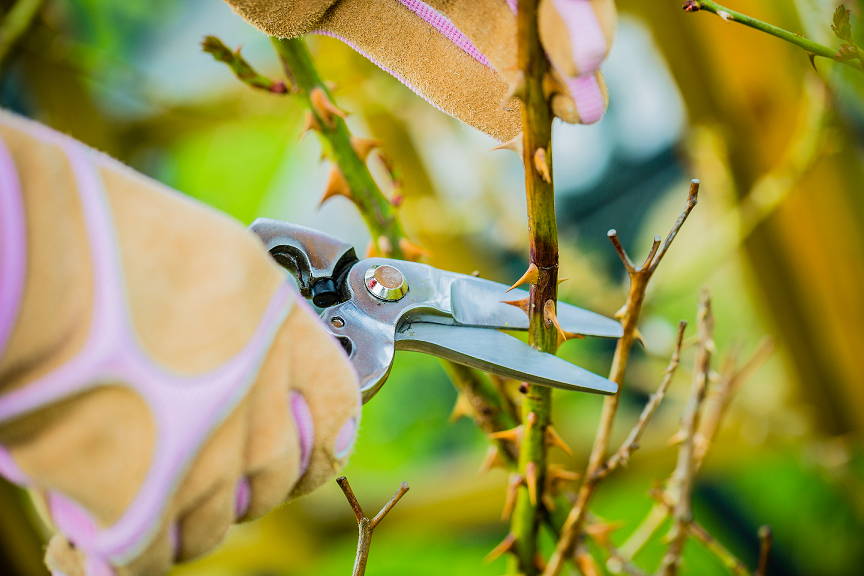How to know whether or not a shrub blooms on new or old wood? Shrubs that bloom on old wood form flower buds the previous season. Spring flowering trees and shrubs form flowers during the previous seasons’ growth. Generally, it is best to prune spring flowering shrubs immediately after flowering. On the other hand, summer flowering shrubs form flower buds on wood formed on new growth.
Some common woody plants that flower on the current years’ wood include:
- Bigleaf hydrangea (Hydrangea macrophylla)
- Butterfly bush (Buddleja davidii)
- Panicle hydrangea (Hydrangea paniculata)
- Roses (Rosa )
- Rose-of-Sharon (Hibiscus syriacus)
How to Prune Shrubs that Flower on Current Season Wood
Prune these shrubs in late winter or early spring. This latter group in the simplest to prune. They will tolerate and perhaps benefit from hard pruning. Simply prune these plants down to within 6-12” of ground level.
Illustrated here are before and after photos of an overgrown butterfly bush (Buddleja davidii).

Butterfly Bush
Buddleja davidii (syn. Buddleia davidii) is a native of China and Japan and is a member of the Figwort family (Scrophulariaceae). It forms lilac to purple flowers with an orange throat in summer, blooming from June to September. As its name implies, it attracts butterflies, but also attracts hummingbirds and bees. Its leaves are sage colored above and tomentose below.
In naturalizes by self-seeding, and in some states (Oregon and Washington) is considered a noxious weed. Control its spread by removing spent flowers before they go to seed.
Cultivars include ‘Ms. Molly’ and ‘Black Knight’.
A related species is the alternate-leaved butterfly bush (Buddleja alternifolia), which as its name implies has leaves that alternate at each node. It has lance-shaped leaves that are green above and gray below. Unlike B. davidii, it blooms in May on wood formed the previous season. In habit, the branches droop, much like a willow tree. Unlike B. davidii, prune this variety after flowering.

Join us next week when we talk about a common flowering tree you should know about.
~ Signing off for now, Joe

